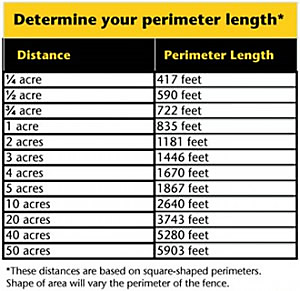Electric Fence Planning 101 - 8 Things to Do Before Electric Fence Installation

After defining electric fencing needs it’s time to do some planning. This includes designing the layout, determining what components are needed, and what you will need to do to prepare for building your fence.Without taking time to plan, you could end up short on materials or blow through your installation budget.
Fencing Laws & Consultations with Neighbors: Know the Rules of the Land
Investigate the local, county and state fencing laws. Become familiar with fencing laws in the area and know your legal rights and responsibilities. The local cooperative extension office may be the best resource on fencing law information. Due to the potential for conflicting views, it’s important to consider the impact of your fence on neighboring landowners. Discuss your plans with them, especially for perimeter or boundary fences.
Check for Tax Credits: Save Money in the Long Run
We all know farm fencing is a major investment. For some operations, cost-share opportunities through government programs may be an option. Consult the local Soil and Water Conservation District or the Natural Resources and Conservation Service (NRCS) on the availability of cost-share fund and tax credits for fencing and water delivery systems.

Sketch It Out: Know What to Expect for Your Electric Fence Installation
While sketching out the electric fence plan, it’s important to note the locations of buildings, trees, water supplies and other important objects in the path of the fence. As you develop your electric fence installation plan, map out locations of:
- Buildings, barns and sheds
- Cross fences and pens
- Electric outlets
- End posts
- Feed bunks
- Fence chargers
- Gates to be added
- Property borders
- Shelters and shelter belts
- Trees
- Water lines
- Wet areas
Boundaries and Topography: Maps Are a Big Help
Aerial photographs of the farm are probably the most valuable fence planning tool and can help to establish field boundaries for pastures. In addition, topographical maps can provide valuable information on the contour and slope of the land you will be installing your fence on. Aerial maps are commonly available from NRCS or the USDA’s Farm Service Agency (FSA) office in your area. Topographical maps can also be obtained from NRCS. Another option in electric fence installation is using Google Earth. This satellite mapping program doesn’t show property lines, but it will help to better understand the various features of the land.
Determine Perimeter Length: How Long is Your Fence?

An accurate measurement of how much fencing will be needed is vital for the plan. The more accurately the measurement is, the more confident you’ll be when ordering the supplies. Under-ordering will create installation delays. Over-ordering is going to hurt your budget.
Choose System Components: Get Ready to Purchase
When your sketches and fence measurements are complete, you’re ready to select components for your system.
Get Fence Tools and Equipment: General and Specialized Tools
The fencing tools and equipment you need for installation vary from standard farm tools to specialized items. Some are made specifically for electric fence installation, while others will help you maintain your electric fence for years to come.
- Post hole digger and/or a T-post driver
- Phillips and standard screwdrivers
- String line
- Cordless drill
- Scissors
- Hammer
- Tape Measure
- Protective gloves, eyewear and clothing

